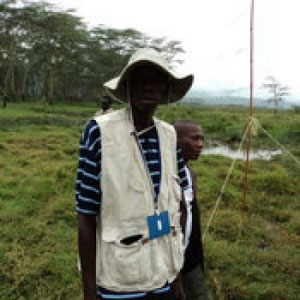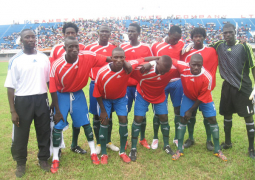
Hello and warm welcome to another edition of the environment, your weekly column that brings out issues of the environment into the limelight.
In our today’s edition, we try to look at the possible benefits and linkages between the national parks and other protected areas and local people in terms of benefits and their role in conserving the parks in the interest of both parties (government and local people).
Therefore, we have decided to critically look at the Tanji Bird Reserve and Kiang West National Park as a reserve and a national park in the Gambia.
Tanji Bird Reserve
Tanji Bird Reserve was established in 1993 on a 612ha large area. It is located along the Atlantic coast, south of the Gambia River and encompasses the Tanji River and its estuary, as well as Bijol Islands, the only island off the coast of the Gambia. This reserve is an important site for migratory bird species and also nominated for the Ramsar Convention list of Wetlands of international importance.
Some of the objectives of the reserve are that it was established for its location as a stopover and feeding, breeding and wintering heaven for migratory birds.
This national reserve is characterized of representative habitats and ecosystems such as woodland, scrub and lagoons, which include mangrove swamps, reefs and encompasses the small islands of Bijol. The Bijol islands represent a nesting site for marine turtles and important breeding site for many bird species.
The main bird species found in the reserve is approximately 295 birds from 65 different families that were observed in the reserve. Bijol Island is also a nesting site for many species such as terns and various gulls.
The reserve is frequented by the Atlantic humpback dolphins Souza teuzsii, white cheeked otter Aonyx capensis, and green sea turtles chelonian mydas. The species of terrestrial mammals present are among others the Termminck red colobus, Piliocolobus badius termminckii, patas and bushbuck Tragelaphus s. scriptus.
Cultural values and economic activities in Tanji Bird reserve
The communities living around the reserve are generally engaged in fishing and agriculture. The gathering of firewood and honey harvesting are also complementary activities. The reserve is a cultural sanctuary used for ceremonies including circumcision and various rites. The new ecotourism camp build by National Environment Agency through UNDPACCCP project is geared toward increasing the income of local communities.
Some of the conservation challenges are many and varies and these includes series of illegal activities being undertaken by the local community members such as dumping, mangrove cutting, use of inappropriate fishing gears, fishing at the spawning areas which could be attributed to increase in human population. However, erosion is one of the biggest threats facing the reserve that could result to biodiversity loss.
Kiang West National Park
The Kiang West National Park (KWNP), covers approximately 11, 526 ha (115 square kilometer) but expansion of the park is in progress and if completed, the total area will be 19, 051 ha and is one of the most important reservoirs of wildlife in the Gambia. KWNP is situated in Lower River Region in the Kiang West District, 145km from Banjul and it was established as a national park in 1987.
Although the major part of the national park is dry deciduous woodland and Guinea Savannah, there are extensive stretches of mangrove creeks and tidal flats. In the mangrove creeks, the West African Manatee and the Nile crocodile occur.
In the mangrove fringes and tidal flats the tracks of various animals such as the African Clawless Otter, Marsh Mongoose and Sitatunga are to be found. Kiang West National Park has become a park of regional distinction possessing an impressive range of flora and avi-fauna (over 250 bird species check listed to date) as well as a number of distinct biotopes. Kiang West National Park is bounded to the north by the River Gambia and is dissected into three areas by the Jarin, Jali and Nganingkoi bolongs.
The park headquarters has accommodation facilities fitted with toilets and showers for up to 24 persons at a time. The facilities are serviced by a borehole and generator for visitor’s convenience and the resource center can be used for conferences, workshop among others for a minimal fee upon request.
Socio-economic importance for local communities
The park create a source of income to the local communities by employing them as rangers, given them contract for boundary clearing as well as provide food such as fish, oyster etc for the local population. There are series of socio-economic activities ranging from rice cultivation, honey harvesting, oyster harvesting, small scale fishing as well as boundary clearing, which is contracted to the local communities geared towards increasing their source of income.
Due to the low income of the local people and the increase in poverty rate, there is a high power struggle over log exportation, illegal activities increased as people took advantage of high demands for forest products in the market.
Conservation challenges
Conservation of forest lands to other land uses such as upland rice cultivation continues in the area. Information collected from Department of Forestry staff and Department of Parks and Wildlife Management indicated several cases of serious illegal exploitation of African rosewood and mahogany (Pterocarpus erinaceous & Khhaya senegalensis species) from 2005 to 2010.
The perpetrators come from both side of the protected area. Herders were also reported looping trees to feed their livestock. Other users of the forest include individual harvesters resident in the villages either for home or commercial.
For your comments, suggestions and questions, please contact (00220) 6361340/ 7142236 or
Email: bajgambia2011@yahoo.com
Read Other Articles In Article (Archive)
Five discharged for theft, accessory of fact
May 16, 2011, 2:06 PM


